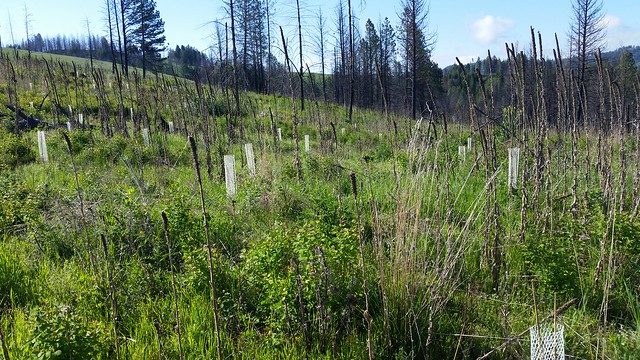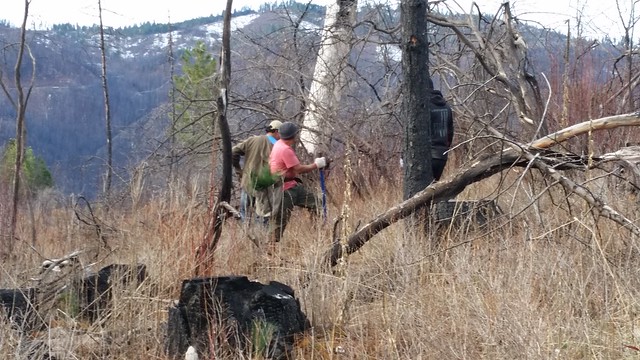
The summer of 2015 was exceptionally hot and dry in northern Idaho. Fuel moistures had dropped to alarming levels, and when a series of lightning storms moved across the region in early August, hundreds of fires flared up. A group of fast-moving and intense fires, which eventually became known as the Clearwater Complex, destroyed 62 homes and damaged another 211 structures. Overall, the fire encompassed more than 47,000 acres of both public and private land.
While the fires were still smoldering, a multi-agency, post-fire recovery organization known as the North Central Idaho Wildfire Restoration group (NCIWR) was formed to coordinate resources and develop a recovery strategy.
In the weeks following the fire, the group met with private landowners to identify needs, connect landowners with technical forest restoration assistance, and seek help forming a strategy for long-term recovery.
While the fires were devastating to timber stands throughout the region, it wasn’t a total loss. After the fires, mills in the region prioritized burned wood, which helped many landowners capture some value to offset their losses.
A USDA Forest Service Burned Area Emergency Response (BAER) team assessment identified the Lolo Creek drainage as the highest priority for post-fire restoration due to the high level of fire severity it experienced, the presence of critical fish habitat, and the readiness and willingness of landowners in the area to replant their forests.
Working with the group, the Idaho Department of Lands (IDL) submitted and was awarded a Landscape Scale Restoration (LSR) project by the Forest Service to restore high priority private forest land in the region affected by the fires. The LSR grant funded planting of 35,000 seedlings in the spring of 2018, with another 100,000 planned for spring of 2019.
However, it was going to take much more than $300,000 to address the full scale of the problem.
One option the state of Idaho is exploring is the use of the Good Neighbor Authority (GNA) in cooperation with the Nez Perce-Clearwater National Forests. GNA allows the Forest Service to enter into cooperative agreements or contracts that allow state agencies to perform watershed restoration and forest management services on Forest Service lands.
Under GNA, the IDL would partner with the Forest Service to increase the pace and scale of timber sales by helping with management and marketing as well as the National Environmental Policy Act (NEPA) analysis.
While the restoration work needed in the Clearwater River Valley is far from complete, both NCIWR partners and landowners find it gratifying to look up at a formerly denuded hillside and see acres of seedlings growing, knowing that in 30 years it’s going to be a forest.

